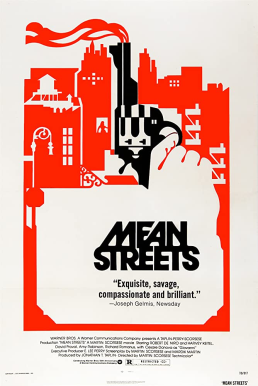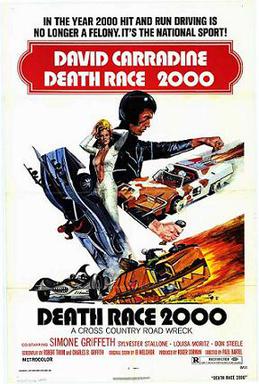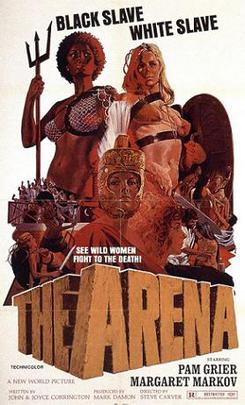
Martin Charles Scorsese is an American film director, producer, screenwriter and actor. He emerged as one of the major figures of the New Hollywood era. Scorsese has received many accolades, including an Academy Award, four BAFTA Awards, three Emmy Awards, a Grammy Award, three Golden Globe Awards, and two Directors Guild of America Awards. He has been honored with the AFI Life Achievement Award in 1997, the Film Society of Lincoln Center tribute in 1998, the Kennedy Center Honor in 2007, the Cecil B. DeMille Award in 2010, and the BAFTA Fellowship in 2012. Five of his films have been inducted into the National Film Registry by the Library of Congress as "culturally, historically or aesthetically significant".

Mean Streets is a 1973 American crime film directed by Martin Scorsese, co-written by Scorsese and Mardik Martin, and starring Robert De Niro and Harvey Keitel. It was produced by Warner Bros. The film premiered at the New York Film Festival on October 2, 1973, and was released on October 14. De Niro won the National Society of Film Critics and the New York Film Critics Circle award for Best Supporting Actor for his role as "Johnny Boy" Civello.

Roger William Corman is an American film director, producer, and actor. Known under various monikers such as "The Pope of Pop Cinema", "The Spiritual Godfather of the New Hollywood", and "The King of Cult", he is known as a trailblazer in the world of independent film. Many of Corman's films are low-budget cult films including some which are adapted from the tales of Edgar Allan Poe.

Bound for Glory is a 1976 American biographical film directed by Hal Ashby and loosely adapted by Robert Getchell from Woody Guthrie's 1943 partly fictionalized autobiography Bound for Glory. The film stars David Carradine as folk singer Woody Guthrie, with Ronny Cox, Melinda Dillon, Gail Strickland, John Lehne, Ji-Tu Cumbuka and Randy Quaid. Much of the film is based on Guthrie's attempt to humanize the desperate Okie Dust Bowl refugees in California during the Great Depression.

Targets is a 1968 American crime thriller film directed by Peter Bogdanovich in his theatrical directorial debut, and starring Tim O'Kelly, Boris Karloff, Nancy Hsueh, Bogdanovich, James Brown, Arthur Peterson and Sandy Baron. The film depicts two parallel narratives which converge during the climax: one follows Bobby Thompson, a seemingly ordinary and wholesome young man who embarks on an unprovoked killing spree; the other depicts Byron Orlok, an iconic horror film actor who is disillusioned by real-life violence and is contemplating retirement.

David Carradine was an American actor, martial artist, director, and producer, whose career included over 200 major and minor roles in film, television and on stage, spanning more than six decades. He was widely known to television audiences as the star of the 1970s television series Kung Fu, playing Kwai Chang Caine, a peace-loving Shaolin monk traveling through the American Old West.

Barbara Lynn Herzstein, better known as Barbara Hershey, is an American actress. In a career spanning more than 50 years, she has played a variety of roles on television and in cinema in several genres, including westerns and comedies. She began acting at age 17 in 1965 but did not achieve widespread critical acclaim until the 1980s. By that time, the Chicago Tribune referred to her as "one of America's finest actresses".

Death Race 2000 is a 1975 American science fiction action film produced by Roger Corman, directed by Paul Bartel, and starring David Carradine. The film takes place in a dystopian American society in the year 2000, where the murderous Transcontinental Road Race has become a form of national entertainment. The screenplay is based on the short story The Racer by Ib Melchior.
Barry Primus is an American television and film actor, director, and writer.

The Arena, also known as Naked Warriors, is a 1974 gladiator exploitation film directed by Steve Carver and starring Margaret Markov and Pam Grier. Joe D'Amato, the film's cinematographer, has stated that he took over direction of the fight scenes in the film.
The 5-mile (8.0 km) Reader Railroad was a tourist-only railroad operating in Reader, Arkansas from 1973 to 1991. As a 23-mile (37 km) common carrier prior to May 1973, it was the last all steam locomotive-powered, mixed train railroad operating in North America. It operated trackage in Ouachita County and Nevada County, Arkansas. The five mile tourist railroad operated until 1991, when it could not meet the new federal safety regulations.

The Last Temptation of Christ is a 1988 epic religious drama film directed by Martin Scorsese. Written by Paul Schrader with uncredited rewrites from Scorsese and Jay Cocks, it is an adaptation of Nikos Kazantzakis' controversial 1955 novel of the same name. The film, starring Willem Dafoe, Harvey Keitel, Barbara Hershey, Andre Gregory, Harry Dean Stanton and David Bowie, was shot entirely in Morocco.

Von Richthofen and Brown, alternatively titled The Red Baron, is a 1971 war film directed by Roger Corman and starring John Phillip Law and Don Stroud as Manfred von Richthofen and Roy Brown. Although names of real people are used and embedded in basic historic facts, the story by Joyce Hooper Corrington and John William Corrington makes no claim to be historically accurate, and in fact is largely fictional.

John William Corrington was an American film and television writer, novelist, poet and lawyer.
Joyce Elaine Corrington is an American television and film writer. She was married to fellow soap-opera writer John William Corrington, who died in 1988.
The Carradine family is an American family of several notable actors. The family patriarch was the minister Beverly Carradine and his grandson, the actor John Carradine, who had five sons, four of whom became actors.

Night Call Nurses is a 1972 American sex comedy film directed by Jonathan Kaplan. It is the third in Roger Corman's "nurses" cycle of films, starting with The Student Nurses (1970).

Martin Scorsese is an American film director, producer, screenwriter, actor, and film historian whose career spans more than fifty years. To date, Scorsese has directed twenty-six feature length narrative films, seventeen feature-length documentary films, and has co-directed one anthology film.

Julie Ann Corman is an American film producer. She is married to film producer and director Roger Corman.

I Escaped from Devil's Island is a 1973 exploitation film about an escape attempt from Devil's Island. Roger Corman and Gene Corman produced this grim adventure saga which was made to cash in on the release of Papillon.
















